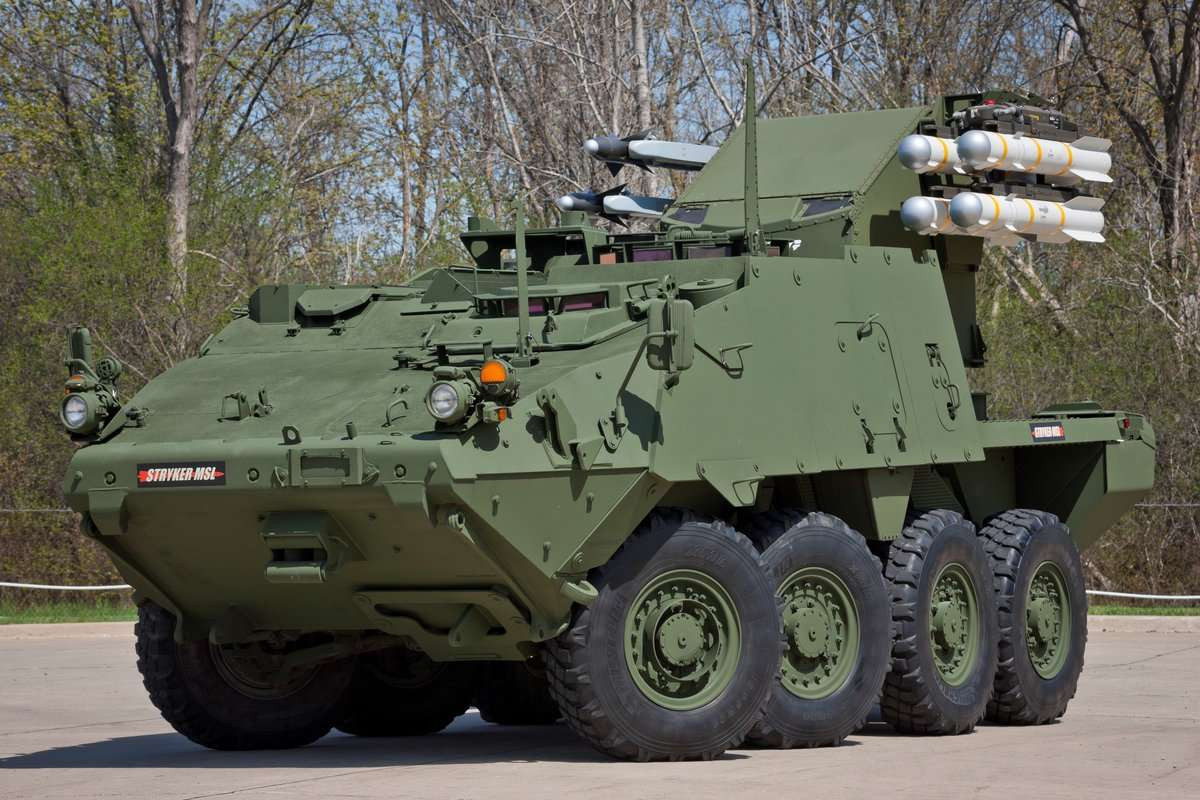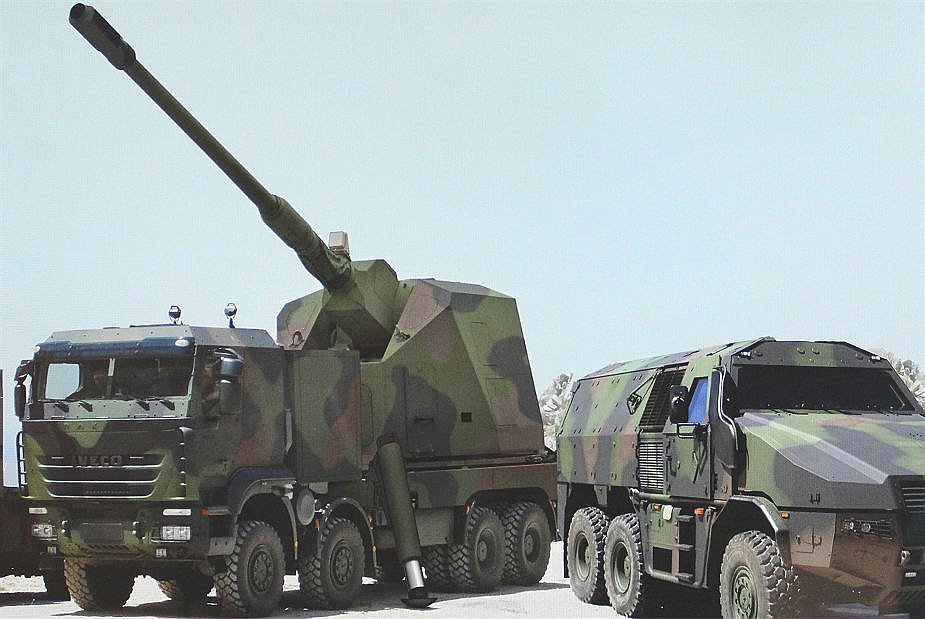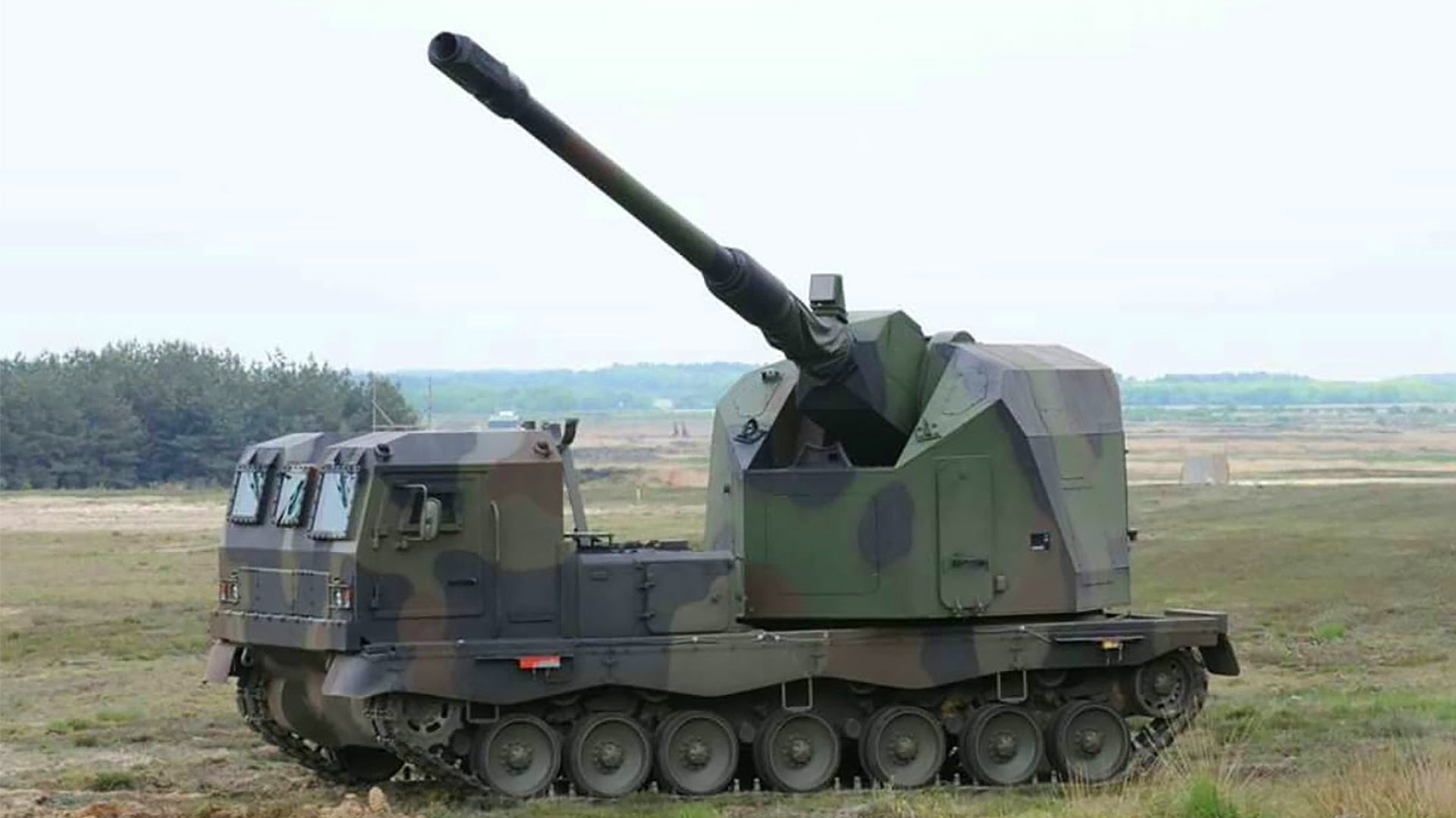For more than a decade, German defense contractor Krauss-Maffei Wegmann, or KMW, has been pitching an armored turret with a massive 155mm howitzer as a relatively low-cost way to turn various tracked and wheeled military vehicles into highly mobile artillery pieces. The company has yet to find a launch customer for this system, which looks like it was ripped straight off the deck of a large warship. But with various countries, including the United States, now investing heavily in new artillery systems there could be renewed interest in the concept.
KMW first announced it was working on this Armored Gun Module, or AGM, in 2004. The weapon system uses the same Rheinmetall 155mm L52 howitzer as the firm’s PzH2000 tracked self-propelled howitzer. The self-contained turret has fire control and other systems derived from the ones found on that large vehicle, as well.
Compared to the PzH2000, the AGM is far more compact and automated, featuring a GPS-assisted inertial navigation system fire control arrangement to quickly get the gun into position and an automatic ammunition loading system to rapidly feed rounds into the weapon. While most self-propelled howitzers require a gun crew of between three and four individuals – not counting the driver and vehicle commander – KMW’s turret only needs two.
In 2006, a prototype AGM on a modified M270 Multiple Launch Rocket System chassis fired 10 rounds in less than three minutes. As of 2008, KMW said the maximum rate of fire of the system at present is six rounds per minute, but that it could increase to eight in the future.

The system is capable of Multiple Round Simultaneous Impact (MRSI) fire missions and has demonstrated an ability to have five rounds hit a target simultaneously out to a range of nearly seven and a half miles. It can fire any standard 155mm ammunition, including rocket-assisted, extended-range rounds that give it a maximum range of around 25 miles or more depending on the type. Coupled together with a super-long-range round, such as the now-in-development ramjet-powered design from Norway’s Nammo, even a small number of vehicles carrying the compact AGM system could cover large stretches of the battlefield.
These are impressive statistics for a turret system that only weighs 12 and a half tons by itself and typically less than 35 tons in all depending on the chassis. KMW’s own PzH2000 is nearly 60 tons. South Korea’s K9 Thunder and the British AS-90 are 47 and 45 tons respectively The U.S. Army’s M109A7, which has a shorter howitzer and less range than a vehicle with the AGM, is still approximately 40 tons.
KMW says they can install the AGM on any vehicle that can handle the weight and shock of firing. In 2008, the company unveiled their own complete system, called Donar, which uses the ASCOD 2 infantry fighting vehicle chassis.

It has since demonstrated other versions on the German company ARTEC’s Boxer 8×8 wheeled armored vehicle and, most recently, on the Italian Iveco Trakker 8×8 truck. The Trakker-mounted variant features supporting outriggers to stabilize the vehicle during firing. KMW has proposed installing AGM’s in fixed and semi-permanent positions for base or coastal defense purposes, as well.
KMW also offers the AGM with a shorter 155mm L39 howitzer, which has a decreased maximum range, but is lighter and has less recoil, making it more suitable for even smaller vehicles. In the past, the firm has released concept art showing this configuration on the back of a 6×6 Navistar Defense tactical truck.

KMW says that Donar can fit inside an Airbus A400M, or any other similarly sized transport plane, which could present another means of quickly getting them nearer to the battlefield. That vehicle also has a top speed of more than 35 miles per hour and can travel over 310 miles on a single tank of gas. An auxiliary power unit also allows it to function with the engine off.
All of these features give Donar a level of versatility that could make it, or a similar configuration using a different chassis, a good choice for various types of mobile armored and infantry units. There could be a number of potential customers already.

In February 2018, the U.S. Army announced it was looking a new, common howitzer to replace its 105mm and 155mm towed types and said that it would be willing to consider a self-propelled weapon system. This service has towed howitzers in various infantry units, including airborne and airmobile forces, and a lightweight, truck-mounted AGM might be one option for many of those formations.
The Army’s units that use 8×8 Stryker wheeled armored vehicles also have towed howitzers. A Stryker-mounted AGM, similar in concept to the Boxer-mounted type, would be better able to keep up with the rest of this force.
The Stryker’s manufacturer, General Dynamics Land Systems, has shown off versions of the vehicle with a flat rear deck and an anti-aircraft turret already. This weapon system is much smaller the AGM, but the company could still use it as a starting place to develop a self-propelled howitzer configuration. General Dynamics’ European Land Systems division already has experience with the system since it produces the ASCOD 2 and worked with KMW on the Donar self-propelled howitzer.

The Army, as well as the U.S. Marine Corps, might be interested in considering the AGM as an option on any of their other future armored vehicles, as well. The Army is already looking to acquire a turreted 120mm mortar system that could work with a variant of its Next Generation Combat Vehicle.
The British Army might also find itself interested in the AGM. In April 2018, the United Kingdom rejoined the Boxer program after having pulled out more than a decade earlier. It is also acquiring variants of the ASCOD 2, which it calls the Ajax. Artillery units supporting formations with either vehicle could use variants with KMW’s 155mm turret to help to reduce logistics strains and the costs of operating a different self-propelled howitzer using a distinct chassis.
Other countries in Europe, especially Germany’s NATO allies, might be interested in expanding their own mobile artillery options as they look to bolster their military capabilities in general in the face of potential threats
from Russia. China is driving similar defense spending increases in Asia, especially among countries with claims in the hotly contested South China Sea. Possibly reflecting the potential for interest in the AGM in the Southeast Asian market, KMW decided to show off the Iveco Trakker-mounted version for the first time at the Singapore Airshow in February 2018.

It still remains to be seen whether the German defense contractor will find success with the AGM after nearly 15 years. But the company clearly feels that there may be a place for the unique features of its weapon system on a variety of different chassis.
Contact the author: jtrevithickpr@gmail.com
